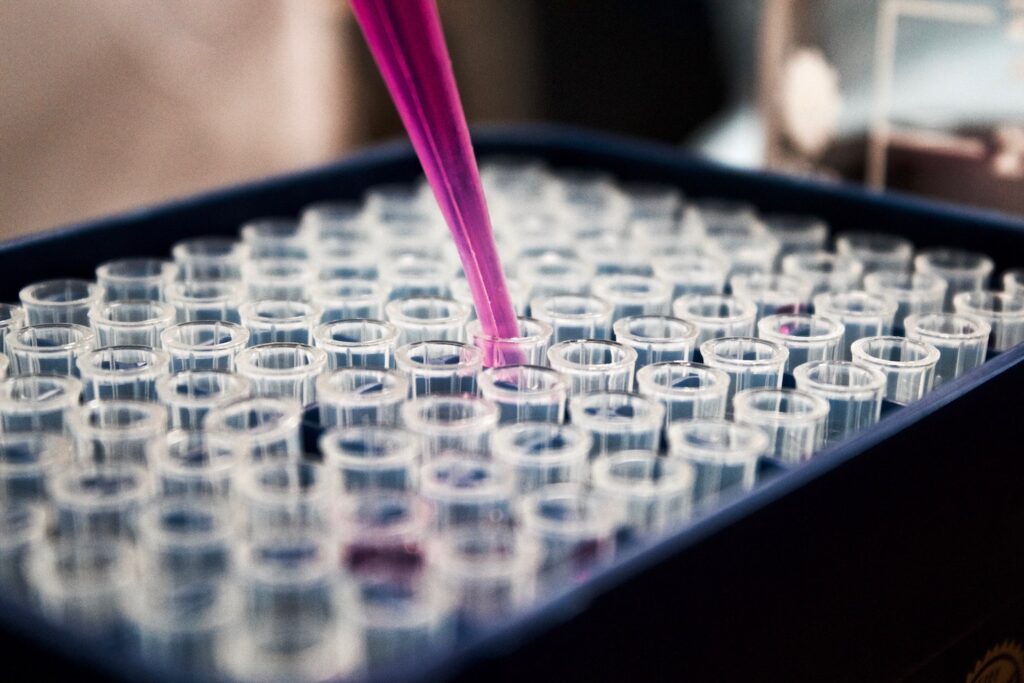The Saga of Straws and the Materials that Make Them

Paper, plastic, PFAS, PHA – when it comes to straws, there are enough “p” words to make your head spin, but these four materials are worth remembering. What your straw is made of matters because some of those materials also create some “p” words of their own: pollution and health problems. However, one doesn’t – PHA. It stands out from the crowd as a positive way forward for straws, free from any of those other three “Ps”. To truly understand how PHA and the phade® straws made from it are different, we have to start at the beginning.
Humans have been using straws for thousands of years (Michelin). They are clean and convenient, and enhance the drinking experience. For individuals with certain disabilities, they are vital to the ability to drink.
In the 1950s, following World War II, the plastic straw was introduced as a cheap, durable, and enjoyable option (TIME). Seventy years later, we’re paying the price for all that plastic. Millions of tons of plastic waste are ending up in our waterways, harming both marine and human life. Even more is sitting in landfills, as traditional plastic takes centuries to break down.
In response, there has been a concerted effort to develop a disposable alternative to traditional plastic straws. Many have placed their hopes on paper straws. After all, some of the earliest straws were made of paper and it’s a plant-based substance that breaks down quite easily. However, there’s a darker side to paper straws that makes understanding that alphabet soup important.
As noted, paper breaks down easily, which is great for post-consumption, but how can it carry liquid without disintegrating? Paper requires a coating or glue to lend that additional durability, but the question then arises, if paper straws contain an additive, are they still biodegradable?
In 2020, researchers at the University of Florida sought to find out. They tested 38 different straws labeled as biodegradable on Amazon.com. The products were a mix of paper and polylactic acid-based straws. Of the 38 straws tested, 36 (94.7%) contained PFAS chemicals (Chemosphere, August 2021), another of those notorious “p” words.
PFAS are per- and polyfluorinate substances, a group of chemicals used to make coatings and products that resist heat, oil, stains, grease, and water (CDC). In other words, using PFAS makes things more durable. PFAS were first introduced in the 1940s and can be found today in things like food packaging, heat resistant non-stick cooking surfaces, cleaning products, personal care items, fertilizer, clothing, furniture, and more. Unfortunately, they can also be found in drinking water, wildlife, marine life, and in the human body. That’s because PFAS are really good at doing what they’re supposed to – not breaking down. So, they are great for their intended purposes, but bad for people, animals, and the environment. They have even been dubbed “forever chemicals” (Chemical & Engineering News).
So, those 36 “biodegradable” straws containing PFAS in the University of Florida experiment? Dr. John Bowden, the lead researcher involved in the study, made the following conclusion:
“PFAS are very persistent. They repel water. Those properties make it difficult for straws to break down. If PFAS are on it, I would not consider it biodegradable” (Chemosphere, August 2021).
Straws that use PFAS are clearly not environmentally friendly, and researchers are still working to understand how people-friendly they are. However, because there are thousands of PFAS and studies are conducted on animals, which may process PFAS differently than humans, definitive conclusions have not been made. It has been suggested that exposure to PFAS may lead to decreased fertility in women, developmental issues in children, interference with the body’s natural hormones, some cancers, and other serious health issues (EPA).
As studies continue, environmental and health groups are scrambling to find ways to detect high levels of PFAS and even remove them from the water supply. There have also been efforts to limit their use. In June, a group of NGOs sent a petition to the FDA asking the agency to ban all “all long- and short-chain per- and polyfluoroalkyl substances (PFAS) as food contact substances” (National Law Review). In July, Maine introduced the world’s first ban on the sale of any product containing PFAS that are intentionally added to the item (Chemical & Engineering News).
The hope is that by limiting the use of PFAS from the start, we can reduce their growing presence, as PFAS eventually get washed down the drain or leach out of landfills and end up in sewage sludge (Chemical & Engineering News).
The researchers that tested for PFAS in paper straws did a follow-up experiment, evaluating the brand with the highest PFAS levels to detect leaching into water at various temperatures. Approximately 2/3 of the total extractable PFAS leached (Chemosphere, August 2021). So, not only would someone using the straw directly ingest the PFAS, but after it was disposed of, the PFAS would also leach from the straw’s final resting place.
Ultimately, many of these seemingly natural traditional plastic straw alternatives aren’t the solution many had hoped, which, finally, brings us to PHA.
Polyhydroxyalkanoate, or PHA, is a naturally occurring biopolymer derived from the fermentation of canola oil. It maintains the feel and user experience of traditional plastic, but because of its organic make-up, PHA acts as an energy and food source for bacteria. Basically, unlike PFAS, it will biodegrade wherever there is significant bacteria present, such as home compost piles, soil, industrial compost facilities, and even the ocean. When PHA breaks down, the only thing that remains is carbon dioxide, water and biomass, which represents the growth and reproduction of the bacteria that consumed the straw. Because phade® straws have been created with PHA rather than the potentially harmful PFAS, polluting plastic, or mushy paper, they are the viable, sustainable straw alternative the world has been seeking.